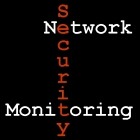Sguil Status

One of you wrote recently to ask about the status of the open source Network Security Monitoring suite called Sguil . You noticed the last release of Sguil (0.6.1) occurred in February 2006. I can assure you Sguil is not dead. In fact, just last week I wrote an article for a new BSD magazine about installing the sensor and server components of Sguil 0.7.0 (from CVS on FreeBSD 7.0. To keep up with development read the sguil-devel mailing list and visit #snort-gui on irc.freenode.net. I expect to see Sguil 0.7.0 released before 13 February 2008 to avoid hitting the two year mark.






